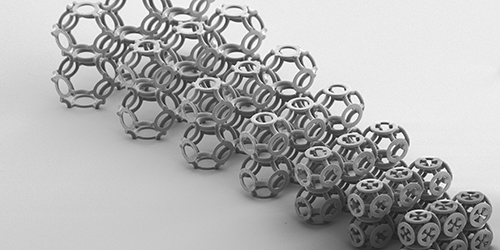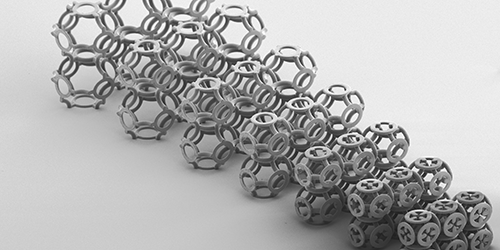Metamaterial Inverts the Hall Effect
Chainmail—a mesh of intertwined metallic rings—was a form of armor popular in medieval times. Today, chainmail geometries have inspired the design of metamaterials with exotic properties. Christian Kern, Muamer Kadic, and Martin Wegener at the Karlsruhe Institute of Technology, Germany, engineered a novel kind of metamaterial featuring an inverted Hall coefficient. The result expands the list of material parameters, from refractive index to magnetic permittivity, whose sign (positive or negative) can take an opposite value in a metamaterial from that in naturally occurring materials.
The Hall effect is the basis of magnetic sensors such as the compasses in smartphones. It describes the generation of a voltage across a current-carrying conductor in the presence of a perpendicular magnetic field. Most solids, in which current is carried by electrons, have a negative Hall coefficient; the coefficient is instead positive if the current is carried by holes (electron vacancies), such as in p-type semiconductors. But in 2015, Wegener’s group proposed a design for a metamaterial in which the coefficient could be positive even if the material’s structural elements had a negative coefficient. Each unit cell in the lattice of this material consisted of a mesh of hollow semiconducting tori.
The authors have now realized their idea by fabricating a 3D polymer “scaffold” covered with zinc oxide. Measuring the Hall coefficient for structures with varying distances between the tori, they showed that this distance determines the coefficient’s sign. The metamaterial could be used to build novel magnetic sensors that contain both positive- and negative-Hall-coefficient elements and can thereby detect gradients or vortices in a magnetic field.
This research is published in Physical Review Letters.
–Matteo Rini
Matteo Rini is the Deputy Editor of Physics.





